Inside the Alien’s Guide to the Ruins of Washington, D.C.
To us, the architecture of the Lincoln Memorial is an iconic callback to ancient Greece. But what would extraterrestrials make of it?
/https://tf-cmsv2-smithsonianmag-media.s3.amazonaws.com/filer/Aliens-DC-Pillar-Builder-631.png)
If thousands of years from now aliens landed in the crumbling ruins of Washington, D.C., what would they make of it? Ellen Harvey has a wild imagination. These days, the artist has been musing about aliens, and about this bizarre question, in particular.
The thought exercise began about a year and a half ago, when Harvey visited the Corcoran Gallery of Art. Sarah Newman, the museum’s curator of contemporary art, invited the artist to work on an exhibition for the Corcoran’s NOW series. The program encourages emerging and mid-career artists to create art inspired by the museum building and its surroundings.
Harvey admired the stalwart columns in the museum’s atrium and gathered, perhaps more than ever before, that neoclassical architecture, with its domes, pillars, peaks and porticos, was not the architecture of her native London and the British Empire, as she thought as a child, or the architecture of democracy, strictly, but a pervasive style that holds meaning for many cultures.
“It’s really infectious,” says Harvey, but “the more I looked at it, the weirder it seemed.”
Enter aliens. Harvey began to imagine beings from another planet settling our nation’s capital, long after we are gone, and the assumptions they might make of us, Earth’s previous inhabitants.
“The aliens, basically, get everything wrong,” says Harvey, with a wry smile.
In the artist’s harebrained scheme, the aliens decide that the “lost pillar builders of the Earth” were a semi-aquatic species that lived in the ocean, but swam upriver once a year to spawn. In these periods of flirtatious frenzy, the creatures assembled “pillar-things,” a.k.a. neoclassical buildings, on the banks.
The aliens find a time capsule containing thousands of postcards of other “pillar-things”—Monticello, Finland’s Parliament, the Buda Castle in Budapest, to name a few—and determine that D.C.’s landmarks inspired buildings and monuments around the world. The Parthenon, for instance, was modeled after the Lincoln Memorial, which the aliens know only as “The Flat Pillar-Thing.” They come up with a vocabulary to describe common architectural features; the three types of pillars, for example, are “boring” (Doric), “frilly” (Ionic) and “very frilly” (Corinthian). And, since structures in far-flung places are so similar, the aliens draw a natural inference: The individuals within the species communicated telepathically.
***
Harvey spins this complex yarn, with all its creative detail, in “Ellen Harvey: The Alien’s Guide to the Ruins of Washington, D.C.,” an exhibition at the Corcoran Gallery through October 6, 2013.
Visitors to the museum can pick up an interpretive map of the decaying city, made by the Brooklyn-based artist. She hand-painted an original and then made copies to distribute to the public. A critical piece to the story, the map describes several of D.C.’s structures from the aliens’ point of view. There is “The Really Complicated Pillar-Thing,” known today as the U.S. Capitol. “This central portion of the Great Pillar-Builder Complex of Washington DC is one of the marvels of the Earth,” reads the map. “Built almost exclusively using Very Frilly Pillars, this is one of the most elaborate iterations of the classic Round Thing on top of a Triangle-topped Rectangular Pillar-Thing.” Then, of course, there is the curious “Oval Pillar-Circle.” The aliens insinuate that the smidgeon of water found in the World War II Memorial is a vestige of a nursery for newborn Pillar-Builders.
If the map is any indication, the aliens turn the ruins into a tourist destination. To reflect this, Harvey constructed an alien souvenir stand, which is now parked in the Corcoran’s atrium. Instead of t-shirts and hot dogs, like the carts on the National Mall hawk today, the stand displays about 150 oil and watercolor paintings of the ruins.
Harvey also collected more than 3,000 postcards, each one depicting an example of neoclassical architecture somewhere in the world, to represent the “Pillar-Builder Archive” that the aliens unearthed. She mounted the postcards on a stark white wall in another gallery space, as she presumes the aliens would have done to study them.
“The aliens, as it turns out, are fairly obsessive,” says Newman. On the wall, postcards of monolisks are positioned together, as are triangle-topped buildings and broken pillars. Arrows link the images in a massive web, marked with symbols—the aliens’ coding system for various architectural elements. “It’s a conspiracy theorist’s dream,” she says.
For a third component to the show, Harvey constructed an alien rocket ship. The 20-foot-tall, upside-down Corinthian column made from aluminum is meant to show how the aliens come to adopt neoclassicism.
Interestingly, there is only one alien to be seen in the exhibition, and Harvey had to point him out. She added the little guy, who has the build of a Lego character, to a painting of the National Mall, displayed on the souvenir stand, to please her son.
***
Arguably, Harvey is as obsessive as her aliens. In 2003, she created A Whitney for the Whitney, an installation that involved her painting copies of every artwork featured in the Whitney Museum’s catalogue. She similarly reproduced every nude in the Bass Museum of Art in Miami Beach, Florida, for her 2010 project, The Nudist Museum. Harvey has voiced on multiple occasions that what interests her most about art is seeing the audience’s reaction.
“We’ve seen D.C. in ruins many times before,” says Newman. The White House is destroyed in the movies Independence Day, The Day After Tomorrow and 2012, says the curator, and the Lincoln Memorial succumbs to Transformers in the third installment of the series. But, Harvey’s take in “The Alien’s Guide to the Ruins of Washington, D.C.” is surprisingly fresh. For starters, Newman notes, “the aliens aren’t the perpetrators, they are archaeologists.”
For the duration of the exhibition, several hotels in Washington are distributing copies of Harvey’s map. The curious map will puzzle tourists, no doubt, and Harvey hopes it will amuse them too. But, as Newman says, the alien’s guide to the city has the potential to impart a more serious lesson—one apropos to tourists—about “how we come to know another culture and what is inevitably lost in translation.”
/https://tf-cmsv2-smithsonianmag-media.s3.amazonaws.com/accounts/headshot/megan.png)
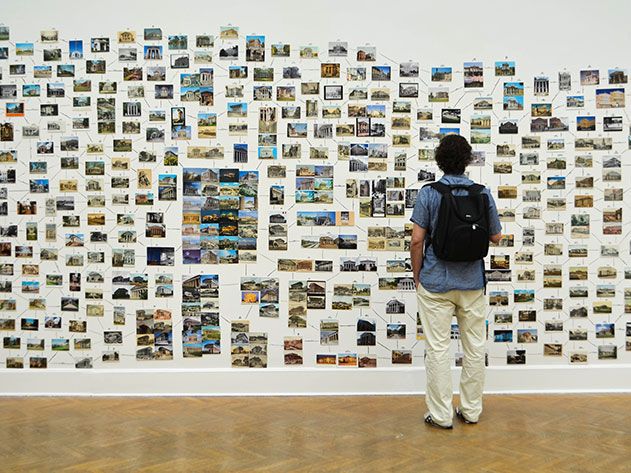
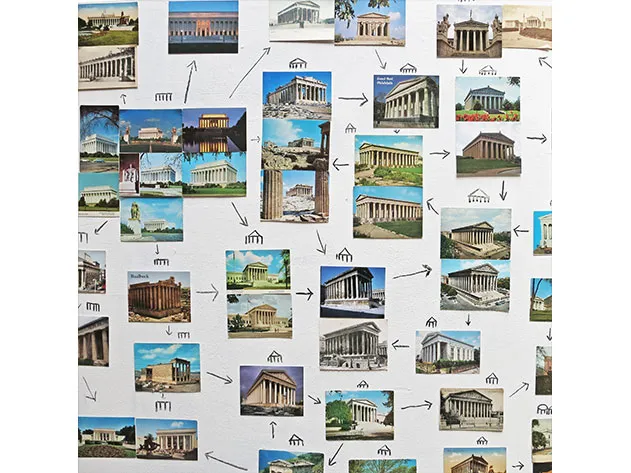
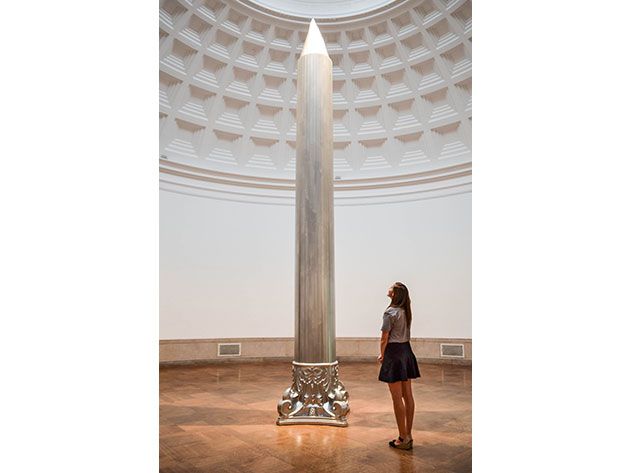
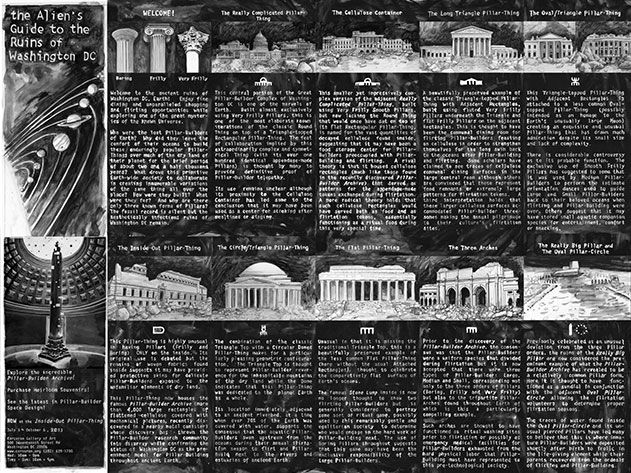
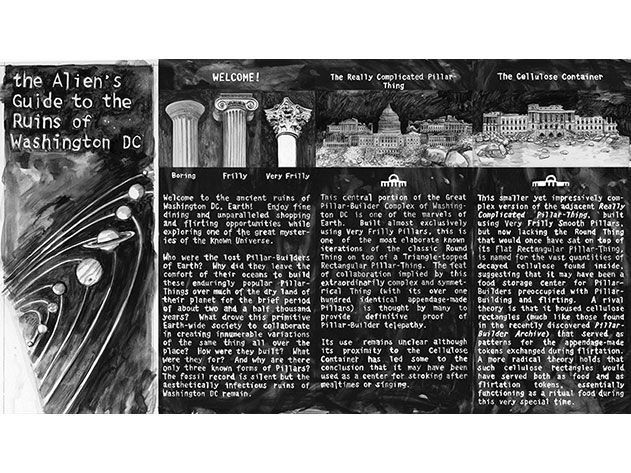
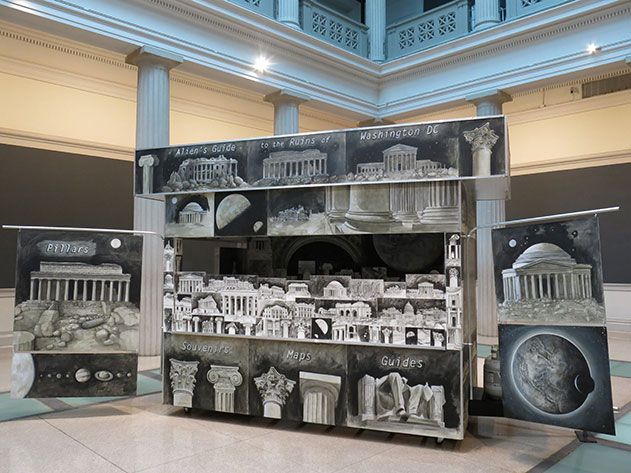
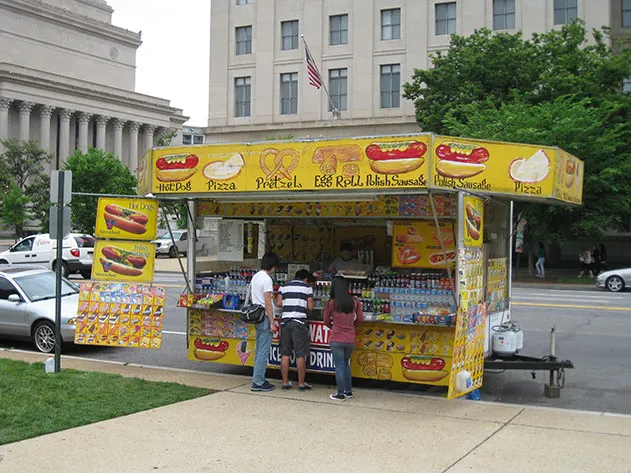
/https://tf-cmsv2-smithsonianmag-media.s3.amazonaws.com/accounts/headshot/megan.png)